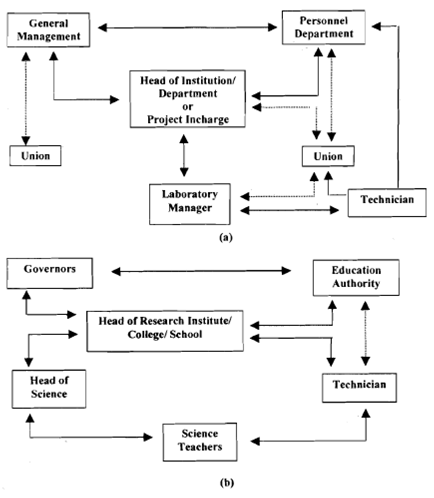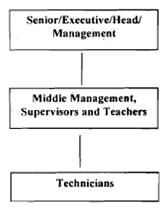CHANNELS OF COMMUNICATION

Figure: (a) A general example, (b) Example in an education lab.
Note: unrestricted path of communication ........................ restricted path of communication.
Having discussed how to communicate with people, let us now consider the people with whom we need to communicate and the ways of communication that are most appropriate. After all, you might be an extremely effective communicator, but if you don't use the correct channels of communication your efforts will be wasted. Worse still you could easily provoke an adverse reaction from some "links" in the chain! Figure illustrates two typical chains of communication.
You will appreciate that there are variations possible, e.g. a lab might have trained technicians working under supervision. In this case, there would be slightly different channels of communication.
First, consider Figure the main channel of communication for a lab technician is to the lab manager or, in a school for example, the head of the science department. It is likely that the responsibility for the employment of lab technician is part of this person's (Head's) duties. This means that, in theory anyway, he or she is the person who directs the technician's activities.
Here, the line of communication is an unrestricted two-way channel and the formality inherent in it depends on the relationships at work. Both parts of Figure could be represented in general as shown in Figure

Figure: General lines of communications.
This figure shows fairly limited view of organizational structure and communications, and there are of course many other possibilities.